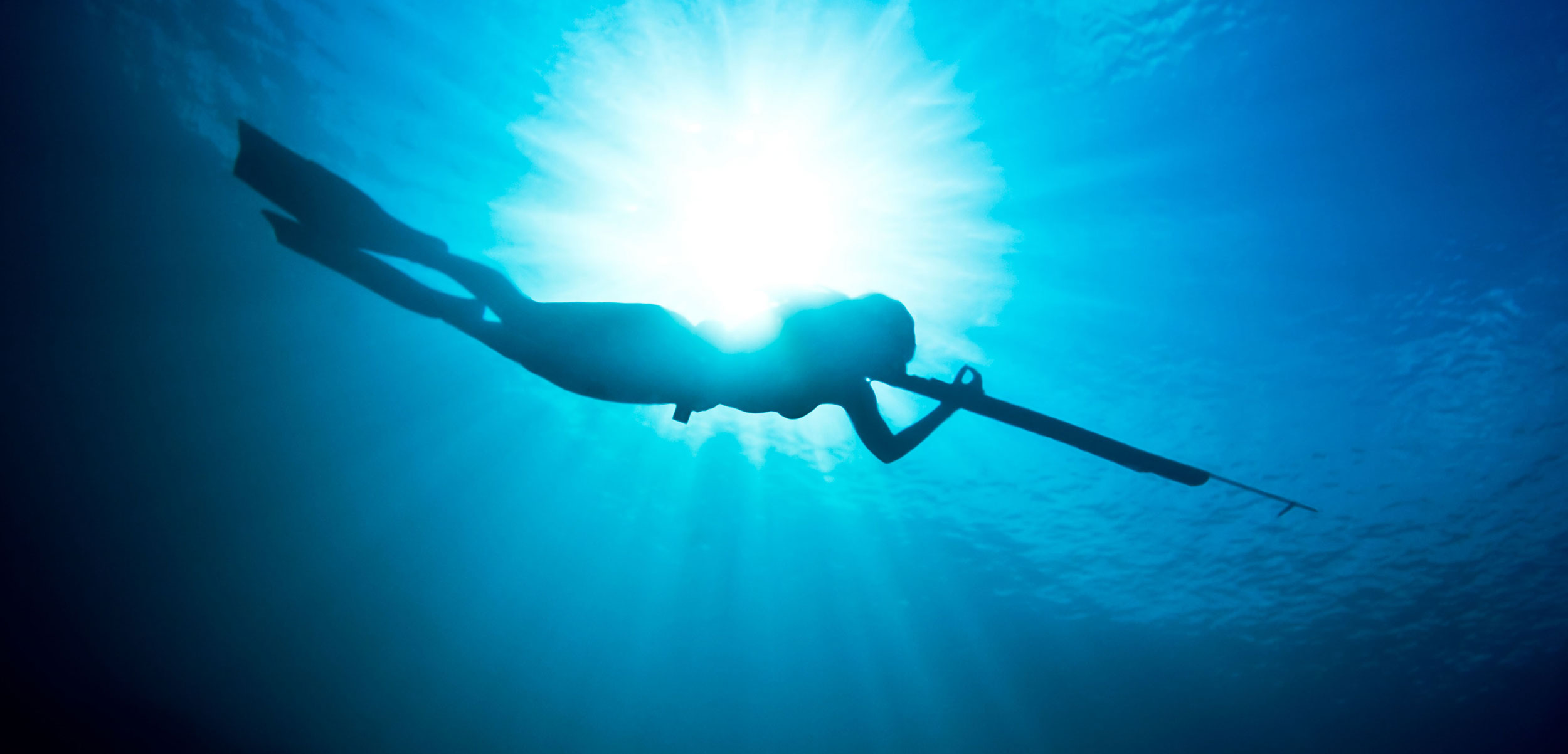Can Fish Tell When a Diver Is Armed?
Scientists test whether fish really can tell if a diver is holding a speargun.
Article body copy
Off the Spanish coast, a diver gripping a speargun leaps into the sea. From a dozen meters away, he spots a white seabream and with a kick of his fins, rapidly closes the distance between them. Yet before he can shoot, the fish darts off, disappearing into the blue-green Mediterranean haze.
The diver didn’t intend to impale the small, striped fish—at least not this time. Instead, he wanted to see how close he could get before it swam away.
Recreational spearfishing is a popular activity throughout the Mediterranean, and common wisdom holds that fish species frequently targeted by spearfishers can tell whether a diver is holding a speargun or not. Recreational spearfisher Valerio Sbragaglia is familiar with this belief, but he is also an ecologist at the Berlin-based Leibniz-Institute of Freshwater Ecology and Inland Fisheries. He and his colleagues decided to study whether the axiom stacked up scientifically. According to their new research, it seems to.
Between May and October 2016, the researchers dove into the Mediterranean and chased more than 1,300 fish, sometimes carrying a speargun, other times unarmed. The goal was to see how close they could get before the fish swam away—a measurement called the flight initiation distance (FID).
The researchers focused their efforts on five types of fish common on Mediterranean rocky reefs that have different historical levels of spearfishing exploitation. They conducted the experiment in three marine protected areas off the French and Spanish coasts, where spearfishing is prohibited, and in three nearby areas where spearfishing is allowed.
The researchers found that fish flee from a diver with a speargun from a much farther distance than they flee from a diver without a speargun. This was particularly true of fish living in places where spearfishing is allowed—and especially true for the most-exploited species.
Sbragaglia and his colleagues have two potential explanations for what they saw.
It could be that the fish most frequently targeted by spearfishers have learned to recognize when a diver is wielding a weapon. By the time a white seabream is large enough to be worth shooting, it’s already 15 or 20 years old, Sbragaglia says. “In those years, the fish learns how to cope with the spearfisher. If you survive, you know very well what a speargun means.” This explanation would account for the fact that fish living in marine protected areas were less fearful because they’ve had far less exposure to spearfishers.
The other possible explanation is that through many years of exploitation, spearfishers have killed the boldest fish, leaving only their skittish counterparts. This could explain why fish living outside of protected areas were quicker to respond to danger, while two to four decades of legal protection allowed the fish living within protected areas to retain their boldness.
Sbragaglia thinks FID could add to conventional measures of the effects of human activity on wild populations. Unlike a gross metric like harvest biomass, which only accounts for how many fish are killed, FID would measure how we are affecting the fish’s behavior. Before an area is opened to spearfishing, for instance, fisheries managers could test how close they are able to get to fish before they flee, establishing a baseline FID for each species. Through recurrent tests of each species’ FID, managers could track how the fish’s responses change over time. If the FID passes a certain benchmark, suggesting the fish have become more timid, the fishery could be closed to give the frazzled fish a break. Once the FID has returned to normal, which could take as little as a year, the fishery could be reopened.
Justine A. Smith, a behavioral ecologist at the University of California, Berkeley who was not involved in the study, finds this proposal compelling, though she cautions against putting too much emphasis on fearfulness measurements.
“I would be concerned if a species is constrained for other reasons,” she says. If a fish is living in a region where its own prey has been depleted, she says, then it might act boldly even in the face of danger. A hungry fish might continue to forage even if it risks crossing the business end of a speargun. “If an animal can flee, then it will. But sometimes, they’re not afforded that capacity.”

